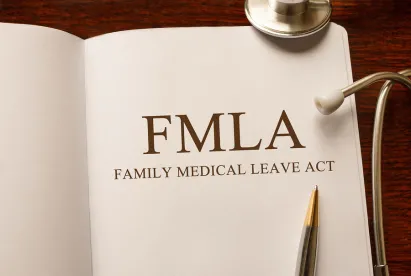Summary
The IRS released guidance in April on the new credit for paid family and medical leave. In FAQ form, this guidance helps employers gauge whether their current policies are sufficient, or whether implementation of conforming paid leave policies may be necessary.
In Depth
In April, the IRS released its first piece of guidance on the newly added credit for paid family and medical leave in the form of FAQs. The FAQs provide helpful information as employers work to either implement conforming paid leave policies or ensure that their current policies are sufficient. However, the IRS acknowledged that additional guidance is needed.
Background
As part of the Tax Cuts and Jobs Act enacted and signed into law in late 2017, Congress added section 45S to the Internal Revenue Code. This section allows employers to claim a general business credit for providing paid family and medical leave to certain employees. In order to be eligible for the credit, the employer must have a written policy that allows no less than two weeks of paid family and medical leave annually. This amount is prorated for part-time employees. The written policy also must provide for payment of not less than 50 percent of the amount normally paid. Although section 45S references the Family and Medical Leave Act of 1993 (FMLA), the leave does not have to be provided under the FMLA provisions. Instead, it can simply be allowed under the employer’s policy. If, however, the employer is not covered by the FMLA, the employer’s written policy must include a non-retaliation clause.
The amount of the credit available under section 45S is 12.5 percent of the wages paid to the employee for a leave period and increases by 0.25 percent for each percentage point of wages paid over 50 percent. For example, an employer who paid an employee 50 percent of his or her wages during a period of leave would be eligible for a credit equal to 12.5 percent of the amount paid. If that employer paid an employee 100 percent of his or her wage amount, the employer would be eligible for a credit of 25 percent of the amount paid. The maximum amount of leave that can be taken into account for the credit is 12 weeks per employee, per taxable year. The employer can only take the credit with respect to employees who have been employed by the employer for one year or more and who did not make more than 60 percent of the section 414(q)(1)(B) threshold for highly compensated employees in the preceding year. As it relates to credits claimed for the 2018 tax year, the employee could not have made over $72,000 in 2017. Leave that is either paid by a state or local government or required by state or local law is not eligible for the credit.
Newly Released Guidance
Although the FAQs do not answer all of the questions related to section 45S, they do provide useful information. For instance, one FAQ explains that “family and medical leave” for purposes of section 45S includes:
- Birth of an employee’s child and to care for the child;
- Placement of a child with the employee for adoption or foster care;
- To care for the employee’s spouse, child, or parent who has a serious health condition;
- A serious health condition that makes the employee unable to perform the functions of his or her position;
- Any qualifying exigency due to an employee’s spouse, child or parent being on covered active duty (or having been notified of an impending call or order to covered active duty) in the Armed Forces; and
- To care for a service member who is the employee’s spouse, child, parent or next of kin.
Other types of leave, such as vacation, personal, or medical or sick leave (other than leave for the purposes listed above), are not considered family and medical leave and are not eligible for the credit. The FAQs also clarify that the employer must reduce any deduction for wages or salaries paid or incurred by the amount taken as a credit under section 45S. Additionally, any wages taken into account in order to determine any other general business credit cannot be utilized to calculate the credit under section 45S.
The IRS stated that additional guidance will be provided on questions arising under section 45S, including:
- When the written policy must be in place,
- How paid family and medical leave relates to an employer’s other paid leave,
- How to determine whether an employee has been employed for a year or more,
- The impact of state and local leave requirements, and
- Whether members of a controlled group of corporations and businesses under common control are treated as a single taxpayer for purposes of determining the credit.
Next Steps
As we wait for further guidance from the IRS, employers who are interested in utilizing this credit should ensure that they have a written leave policy that satisfies the requirements under section 45S. Employers should also consider what impact claiming the credit for family and medical leave will have on the other deductions and credits the employer is already taking, and employers should only take the credit if they are in a better overall tax position. In any event, employers need to make these decisions quickly. Unless Congress passes an extension, the credit will only be available for the 2018 and 2019 tax years.






 />i
/>i
